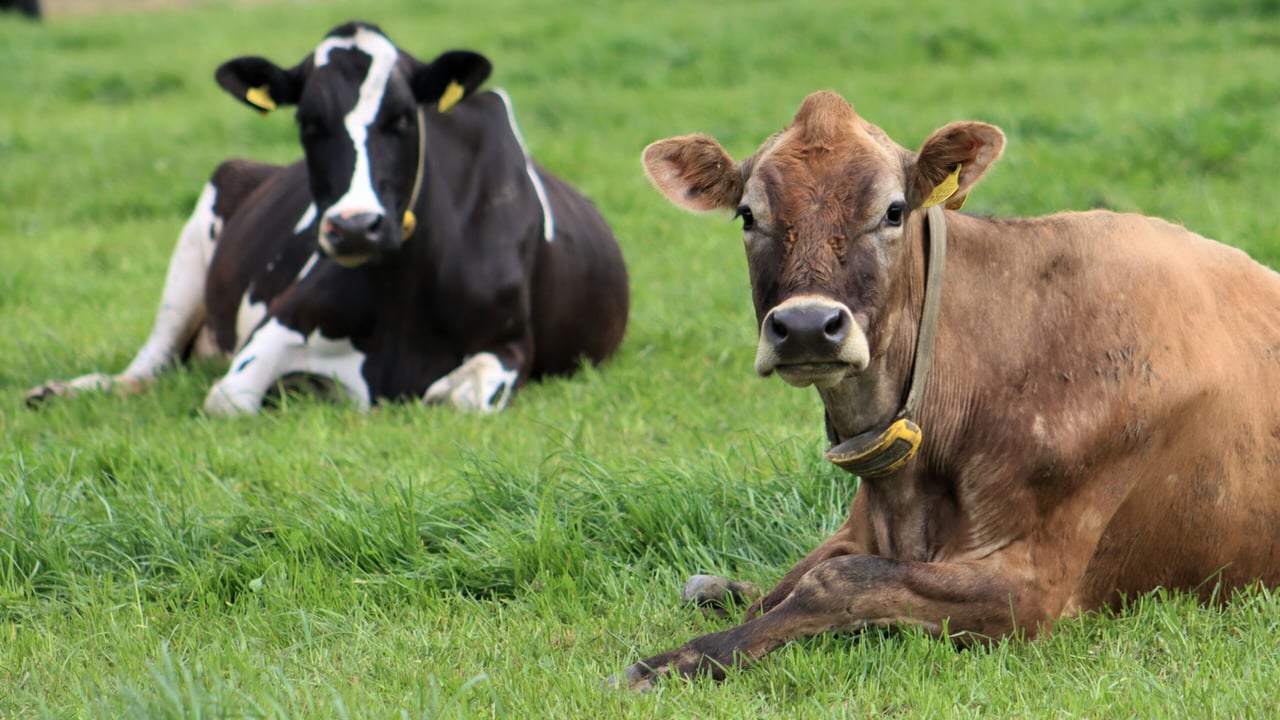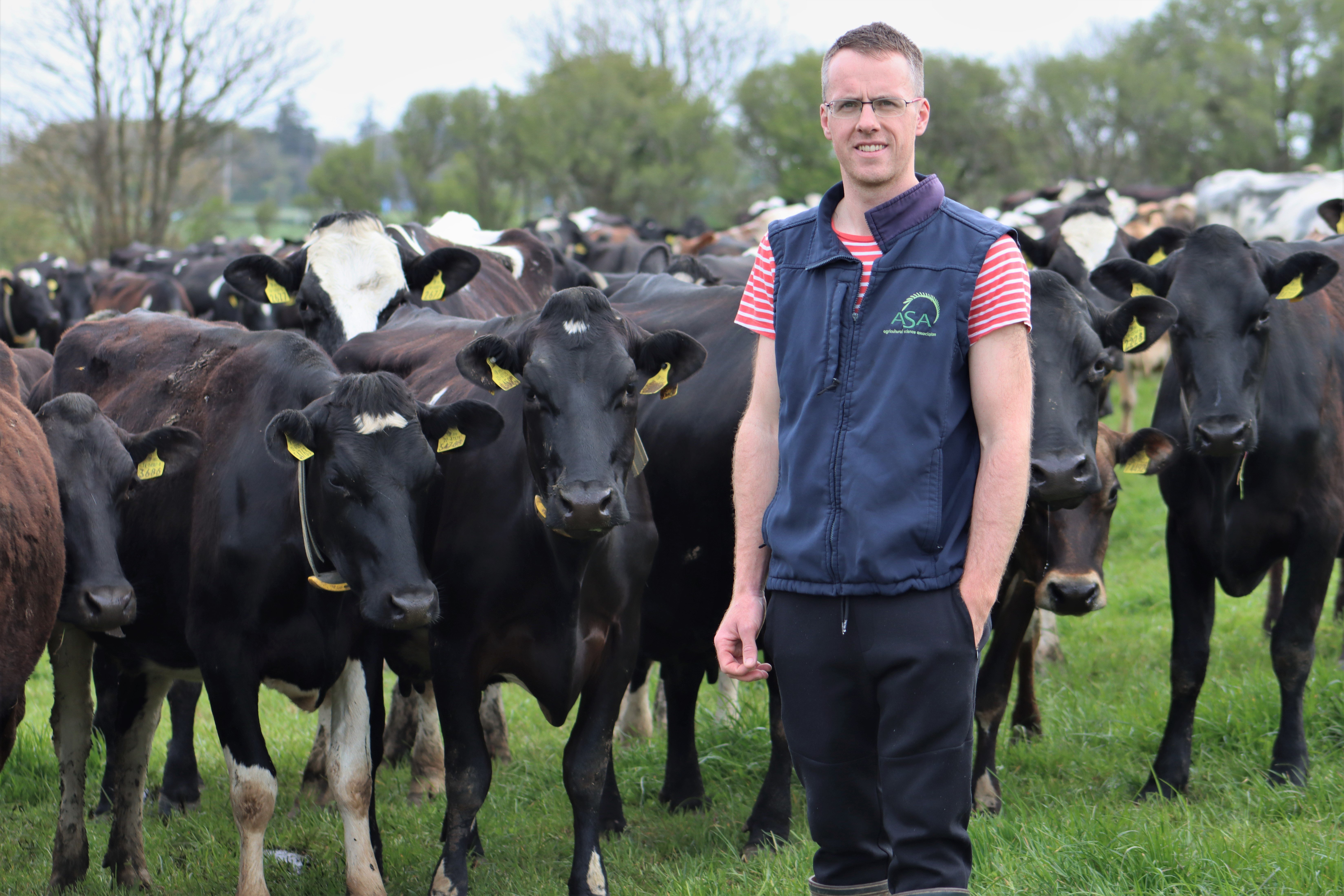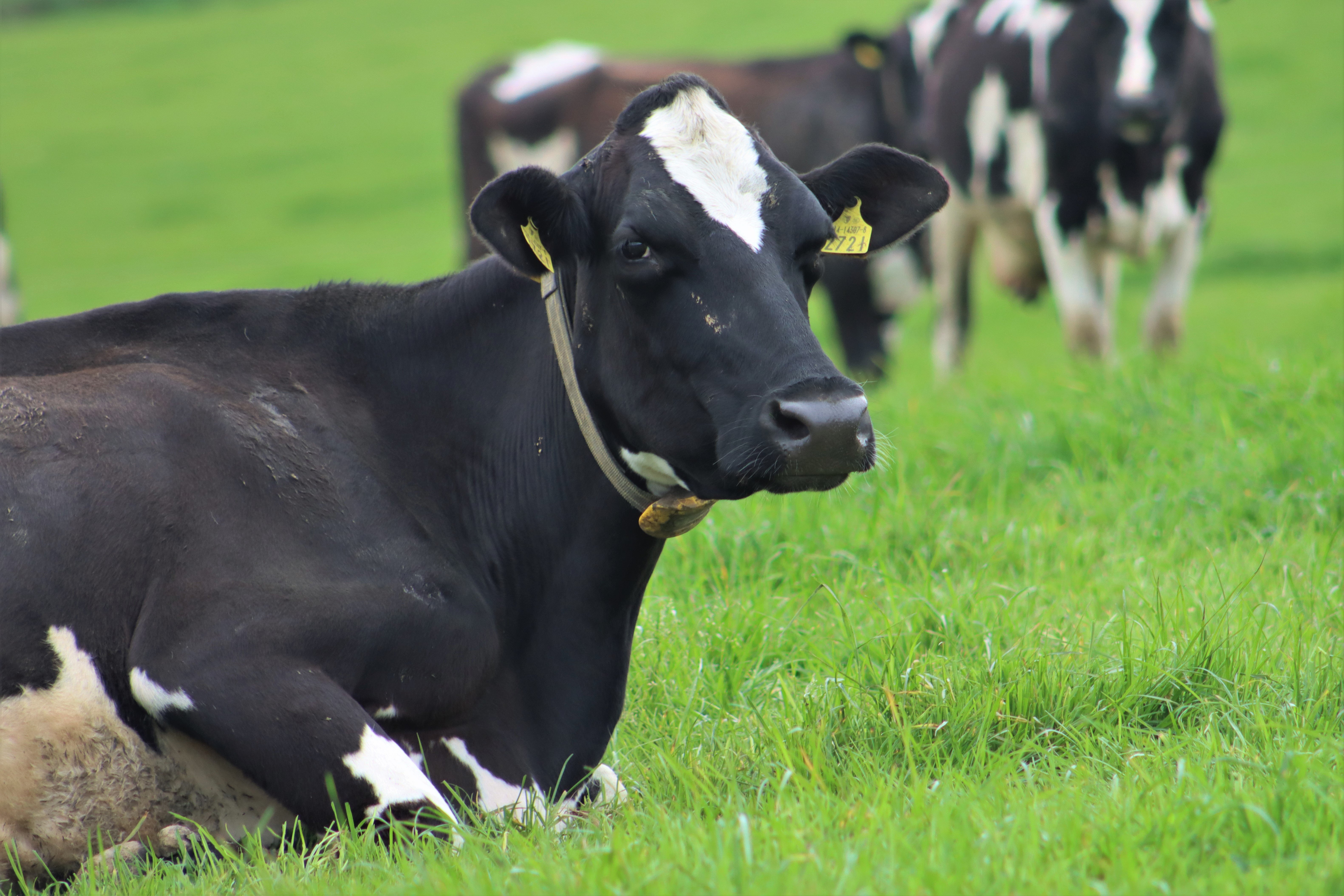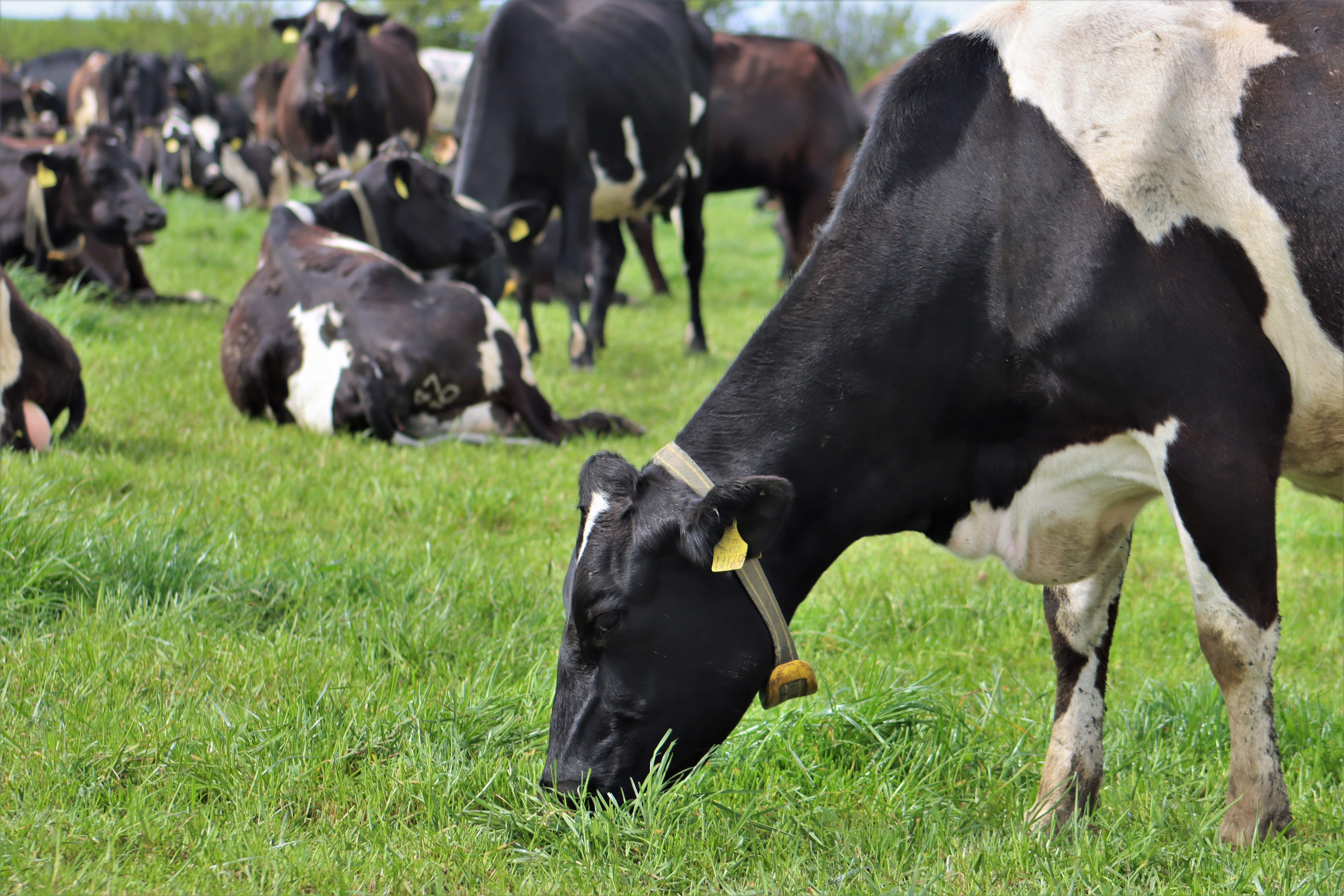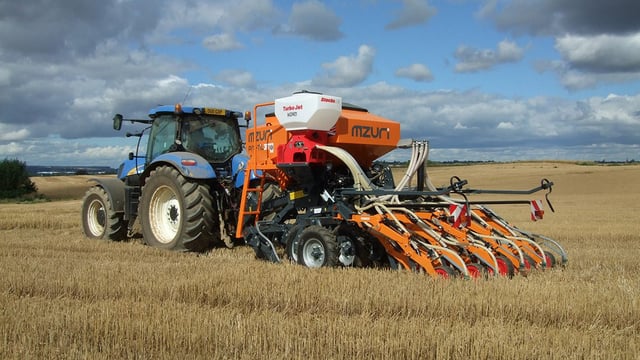Sponsored Article
Increasing first serve conception on west Cork farm
Sponsored Article

Jerome O’Brien milks 200 cows with his father Johnny in Lislevane, west Co. Cork. They knew they were having issues with heat detection on the farm, and decided to install Censortec CowControl powered by Nedap to solve those issues.
“Some cows were having silent heats, and we had a problem with cows having false heats too. You’d serve them and they’d be bulling again in 10 days’ time," Jerome explained.
"We were wasting artificial insemination (AI) straws, and cows were taking longer to go back in calf.
“A few friends of mine had installed CowControl, and they spoke so highly of the system that we made the decision to install it in January 2022.”
Improvements
In the first year they halved the herd’s empty rate from 14% to 7%, and increased conception to first service from 51% to 73%. These improvements are all down to Censortec CowControl, according to Jerome.
The O’Briens haven’t looked back since. Their heat detection used to be labour intensive, using tail paint and scratch cards.Now, Jerome and Johnny rely on the data from CowControl’s heat detection system completely.
Censortec CowControl, powered by Nedap, is a collar-based activity monitoring system that helps farmers with heat detection and health monitoring.
Censortec, which operates out of Killorglin, Co. Kerry, is the leading supplier of activity monitors to Irish dairy farmers. It works closely with its supplier, Nedap Livestock Management, which is based in Groenlo, the Netherlands.
“Last year we jumped straight in at the deep end and trusted the system totally from the get-go. We used it for pre-breeding checks, and CowControl identified 36 cows that hadn’t cycled," Jerome explained.
"Before breeding started, we got the vet to check the 36 cows, and they confirmed none of them had cycled. They were all treated, and most of them were served in the first three weeks.
"It was the same story this year before we started breeding, we had 40 cows to check. All were treated and should be served in the first three weeks. It’s eliminated those problem cows because they’re dealt with quickly.
“We were spending a lot of time and labour on heat detection,” Johnny added.
“During breeding, we were topping up the tail paint every two to three days, and then we were watching the cows at both milkings, again in the middle of the day, and last thing at night. We were doing all this, and we knew we still had an issue.
"Now, by automating our heat detection, we’ve improved the herd’s fertility and saved ourselves time and labour in the process.”
Johnny and Jerome changed their breeding policy for 2023. Prior to installing CowControl, they were using conventional AI and cleaning up with a stockbull.
"We’re using 100% AI this year," Jerome said.
"The top 30% of the herd were given sexed semen for the first three weeks of breeding, and the remaining 70% gets beef. After the first three weeks, everything gets beef.
"We’ve eliminated the stockbull, because we’re able to catch the trickier cows in heat with CowControl, and give them beef AI now. Our submission rate in the first three weeks was 98%, CowControl helped us achieve that figure.”
CowControl helps Johnny and Jerome to identify which cows make the cut for sexed semen.
“We pick cows that have had at least two strong heats, which CowControl tells us," he said.
"Then we pick cows that have calved early, with a good EBI and good solids. The extra data from CowControl makes choosing the cows suitable for sexed semen far easier.
“The system gives us an Optimal AI Time for each cow’s heat, so any cow that’s to get sexed is served 14-22 hours after the start of the heat.”
“The data that CowControl has around each cow’s individual heat is a brilliant feature. We know how strong that heat is. Before we were serving cows on heats that weren’t optimal. Now, with the heat scoring and Optimal Time of AI from CowControl, we know exactly what’s going on with each cow," he added.
Heat detection
Johnny and Jerome find that CowControl health monitoring is as essential as it’s heat detection capabilities.
“We probably underestimated the effect of the health side of things," Jerome admitted
"We didn’t do any sort of routine health monitoring, and now that CowControl does it for us we see how important it is. We’re definitely picking up sick cows 12-24 hours earlier than we were before.
"We can treat them, and then you have the data from CowControl to show you if what you’ve given them is helping them to improve, or if they’re getting worse,” he said.
Any cow that gets a health alert is checked in the milking parlour, and if the problem isn’t identified there, a more detailed check is carried out in the crush.
“More often than not, it saves us having to call the vets, and we can use less aggressive treatments," Jerome said.
"If a cow alerts and when we check her, she has a slightly hard quarter, we would use some udder mint, and if it’s still an issue at the next milking, we use an AHV bolus. Last year we didn’t use any mastitis tubes after April, because we were picking up any udder issues before they developed into full blown mastitis."
Censortec CowControl
Censortec CowControl has impacted the way transition cows are managed in the herd too.
“It’s a great tool after calving," Jerome continued.
"Before we would have missed subclinical ketotic cows. Now as soon as we see milk drop and rumination decrease, we treat with a bolus and she comes right fairly quickly, whereas before you could have had a cow with a full-blown case of ketosis needing the vet. It saves the cow from suffering more, and it saves us the cost of a vet visit.”
After a few weeks of looking at the data from their transition cows last year, Johnny and Jerome decided to change how those cows were managed for the first five days of their lactation.
“We would have always turned out our fresh cows straight to grass, but we saw that they were flagging up as inactive with decreased ruination on CowControl," Johnny said.
"Now, we keep them in for four or five days and it’s leading to less issues. The cows are on a more consistent plane of nutrition when we keep them in as well for that bit of extra time."
“It’s given us great confidence to treat more cows ourselves now as first port of call, like last week we had a cow calved, and four days later she became inactive overnight. At milking time, she was lying in the cubicles, and we didn’t force her to get up, but just gave her calcium there. She got up straight away and made her way to the parlour.
"Because we could see that she’d been down for so long, we knew she needed something. If we didn’t have that information from CowControl, we would have tried to get her up and she would probably have fallen and injured herself. Overall, we’ve decreased antibiotic use and it gives us peace of mind.”
The O’Briens have made great savings and become more efficient since installing CowControl. Based on halving their empty rate, they have saved €8,000/yr.
"That’s not the only saving; we have more cows calving earlier so we’re selling more milk earlier in the season, we’ve cut down antibiotic use, we’re breeding from our more profitable cows, we don’t have the costs associated with a stockbull, and there’s a huge labour saving," Jerome said.
“We aren’t spending three hours a day during breeding and pre-breeding watching and tail painting cows. I think breeding is your busiest time, not calving time. If your breeding season goes right your calving season goes right.”
“It’s made farming more enjoyable.
"I play football with our local club, and during breeding I can head off to training and not worry about watching or serving cows when I get home. We always have an extra set of eyes on the cows," the farmer added.
"CowControl has had a big impact on the herd; we’ve improved cow health, we improved fertility, and we have a better life because of it," he said.
For more information on CowControl, click here.
Sponsored Article


